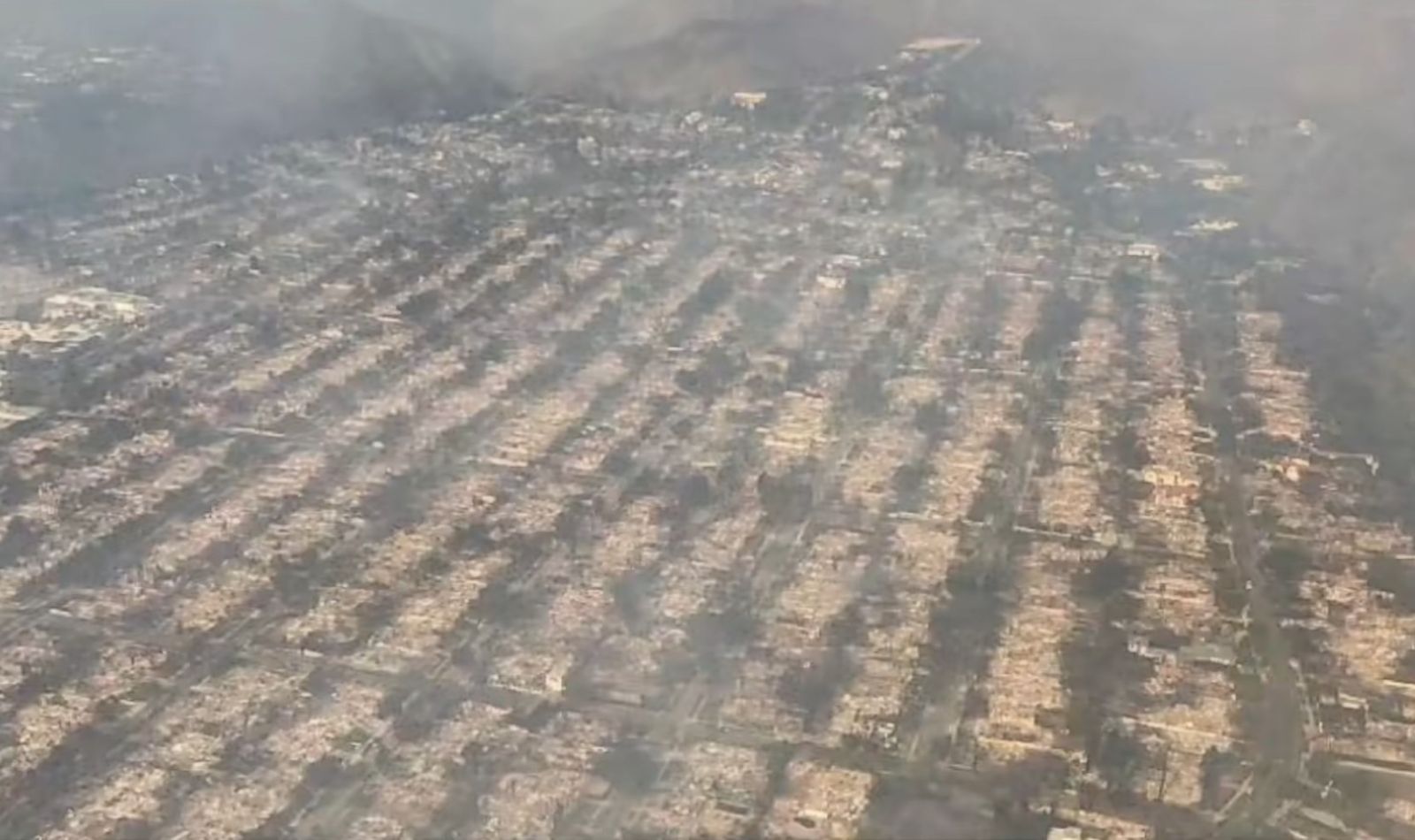加州發生史上最嚴重的火災
近期加州發生的大火已成為該州歷史上最嚴重的自然災害,燒毀超過35,000英畝的土地,摧毀無數家園並導致巨大的經濟和環境損失。這次災難的起因、損失及其長遠影響備受全球關注。
這場大火的主要原因可以追溯到氣候變遷所帶來的極端氣候條件。乾旱天氣持續多年,加州森林的植被早已變得乾燥易燃。而近期的強風(焚風效應)和高溫更進一步助長火勢。根據專家分析,來自內陸的季風在穿越高山後產生的乾燥風,令加州南部的火災風險提高。此外,人類活動如用火不當或基礎設施老化也可能是引發火災的誘因之一。
在此背景下,加州的基礎設施和應急系統面臨巨大壓力。多年來該州已習慣於每年秋季的野火高峰,但這次災難的規模遠超過預期。儘管政府和消防部門採取積極行動,但乾旱的環境與缺水問題讓救援工作舉步維艱。截至目前,這場野火已造成至少11人死亡,超過150,000名居民被迫撤離家園。火災摧毀超過10,000棟建築物,令許多人失去家園並需要長期庇護。經濟損失方面,據估計此次火災可能造成1350億至1500億美元的經濟損害,這包括被毀壞的住宅、商業建築和基礎設施修復的成本。此外,保險業也受到嚴重影響,預計理賠金額將超過200億美元,加劇該州保險市場的危機。
環境方面,這場災難釋放大量的二氧化碳和其他污染物,對空氣品質和生態系統帶來毀滅性影響。當地居民不得不面臨空氣污染、飲用水資源短缺以及生態多樣性受損的挑戰。經濟活動同樣受到波及。大規模停電和交通中斷令許多公司暫停運營,旅遊業遭受重創,部分著名景點被迫關閉。居民的生活被嚴重干擾,大批撤離的家庭面臨心理壓力和經濟負擔。
這場火災凸顯加州在應對氣候變遷和自然災害方面的結構性問題。隨著氣候變遷導致極端天氣事件增多,加州未來的火災風險只會更加嚴峻。為減少未來火災的頻率和損害,政府需採取以下措施:加強森林管理以減少可燃物的積累、升級基礎設施以防止火災由人為因素引發、以及推進居民的防火教育,並解決消防栓缺水的問題。此外,加強國際合作,推動全球氣候行動,緩解氣候變遷的根本原因,對於加州乃至全球的災害防範都至關重要。同時,需要擴大保險市場的容量,減少居民和企業面臨的經濟風險。火災過後的恢復工作應該注重長期的可持續發展,重建一個更具韌性的社區和生態系統。
The recent wildfires in California have emerged as one of the most catastrophic natural disasters in the state’s history. Spanning over 35,000 acres, the fires have devastated communities, destroyed countless homes, and caused significant economic and environmental harm. This disaster’s origins, damages, and far-reaching consequences have drawn widespread international attention.
The primary causes of these wildfires lie in the extreme weather conditions brought on by climate change. Years of prolonged drought have left California’s forests and vegetation dry and highly flammable. Recent weather patterns, characterized by strong Santa Ana winds and soaring temperatures, have further intensified the situation. Experts point to seasonal monsoon winds from inland regions, which become drier as they traverse mountain ranges, as a key factor elevating fire risks in Southern California. Human activities, including improper fire use and aging infrastructure, have also contributed to the likelihood of ignition.
California’s emergency systems and infrastructure have faced enormous strain during this crisis. While the state has adapted to dealing with annual wildfire seasons, the sheer magnitude of this disaster has overwhelmed available resources. Despite proactive measures by the government and firefighting agencies, the combination of dry conditions and limited water supplies has severely hampered firefighting efforts.
The toll of the wildfires has been devastating. At least 11 people have lost their lives, while over 150,000 residents have been forced to evacuate their homes, many of which were completely destroyed. Over 10,000 buildings have been reduced to rubble, leaving families displaced and in need of long-term shelter. Economically, the state faces losses estimated between $135 billion and $150 billion, encompassing the destruction of residential and commercial structures as well as the costs of infrastructure repairs. The insurance industry is also grappling with enormous claims, with payouts expected to exceed $20 billion. This has further destabilized California’s insurance market, already under pressure from rising disaster risks.
The environmental consequences of the fires are equally grave. Vast amounts of carbon dioxide and other pollutants have been released into the atmosphere, significantly degrading air quality. The local ecosystem has suffered extensive damage, leaving residents to contend with challenges such as air pollution, water scarcity, and reduced biodiversity.
The economic ripple effects of the disaster are far-reaching. Prolonged power outages and widespread transportation disruptions have forced many businesses to suspend operations. The tourism sector has been heavily impacted, with iconic destinations forced to close due to fire damage. Families displaced by the fires are facing immense psychological and financial burdens, exacerbating the human cost of the disaster.
This catastrophe underscores structural weaknesses in California’s approach to climate change and disaster preparedness. As the effects of climate change intensify, the frequency and severity of wildfires in the state are expected to increase. To address this, significant reforms are needed. Improved forest management can help reduce the buildup of flammable materials, while upgrades to infrastructure can minimize the risk of fires caused by human activities. Public education on fire prevention and solutions to water shortages in firefighting operations are critical to reducing future risks. Additionally, global climate action must be prioritized, as addressing the root causes of climate change is essential for mitigating its long-term impacts.
In the aftermath of the fires, recovery efforts must focus on building more resilient communities and ecosystems. Sustainable redevelopment can help ensure that the affected regions are better equipped to withstand future disasters. Expanding the capacity of the insurance market is also vital to reducing the financial risks faced by residents and businesses.
While these wildfires have caused immense suffering and loss, they also serve as a powerful reminder of the urgency to act against the growing threat of climate change. This disaster compels both local and global communities to reevaluate how we coexist with an increasingly volatile natural environment. Through decisive action and international collaboration, California and the world can move toward a more sustainable and resilient future.


照片:中國微博
- 1
- 2
- 3
- 4
